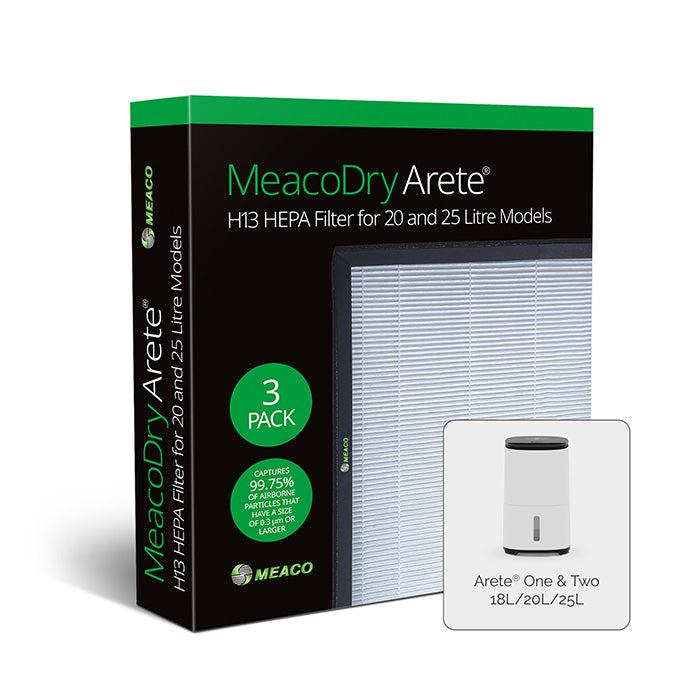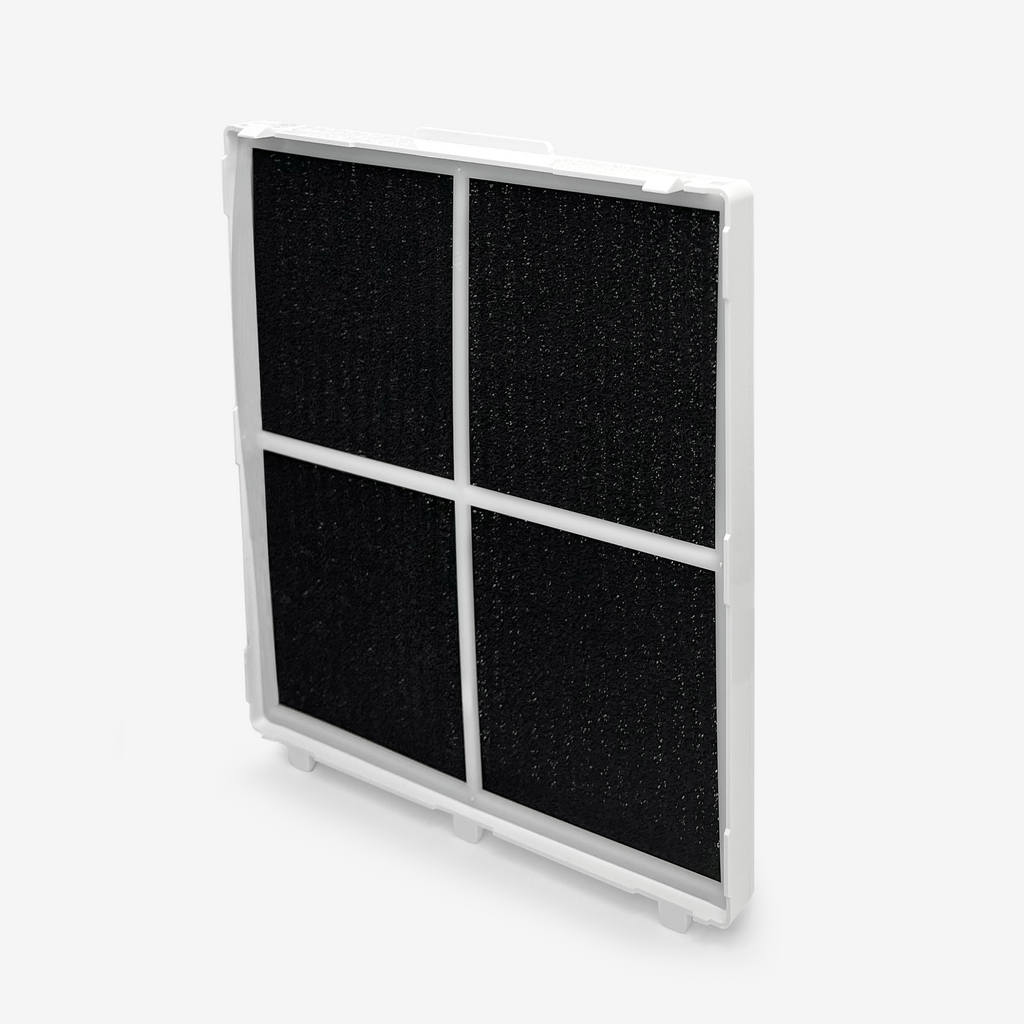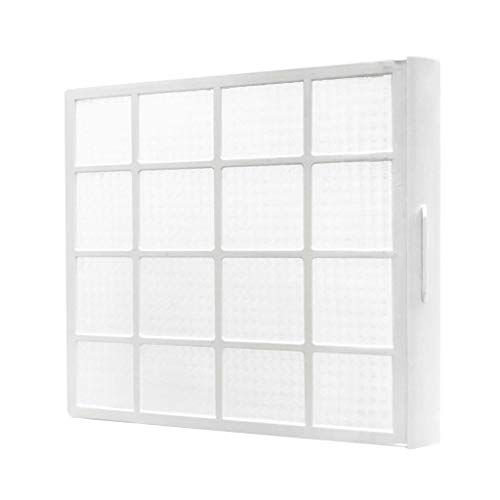The biggest dehumidifier mistakes you could be making – and the simple ways you can boost its performance this winter
Are you using your dehumidifier all wrong?

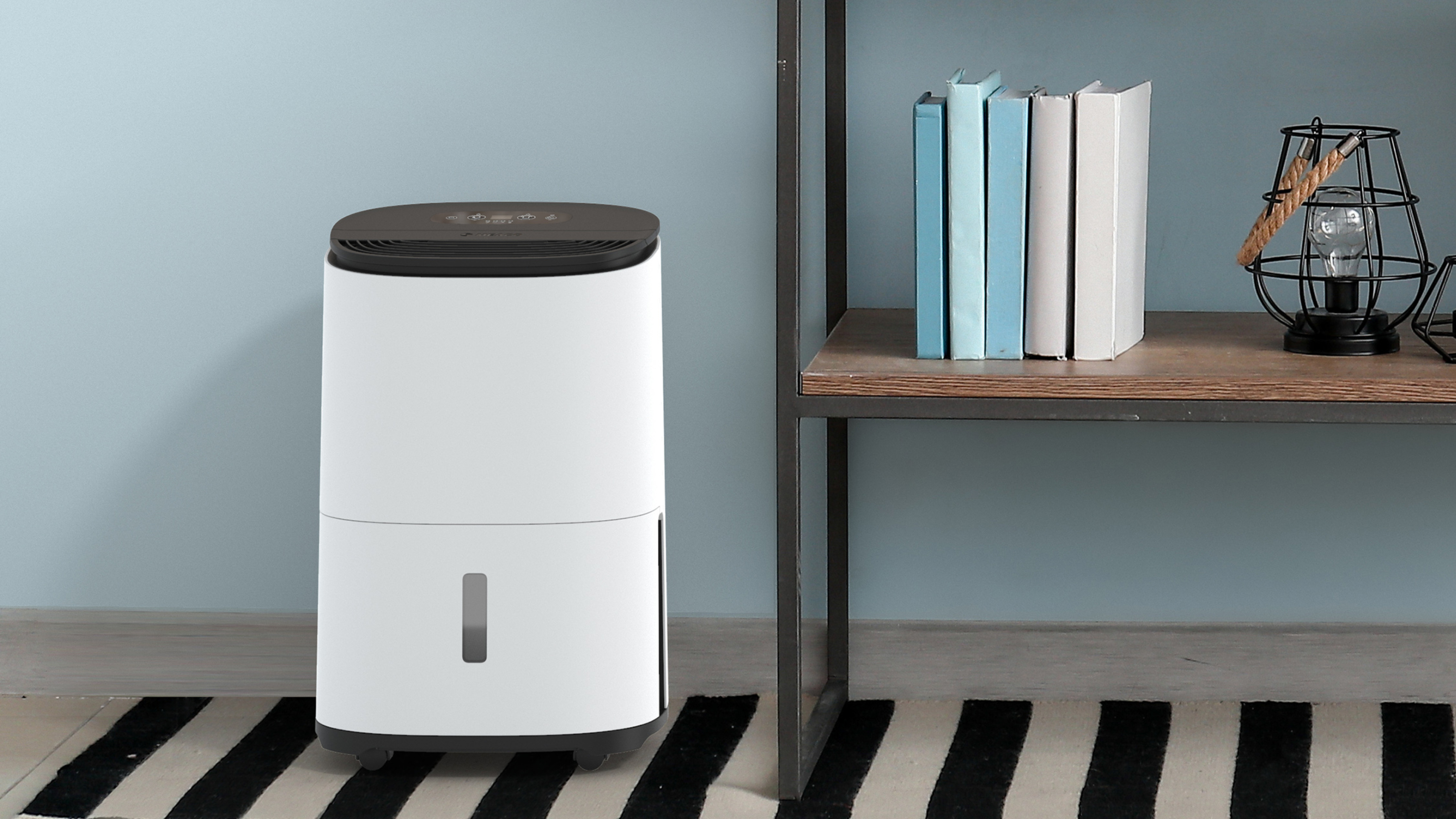
- 1. Putting it the wrong way round
- 2. Neglecting to clean or change the filter
- 3. Putting it in the wrong place
- 4. Assuming that drying clothes naturally is cheapest
- 5. Neglecting to empty the water reservoir
- 6. Not setting the humidistat correctly
- 7. Assuming they're expensive
- 8. Putting it too close to the wall
- 9. Getting the wrong size for the job
- 10. Not doing your research before buying
- 11. Not getting rid of mould in the tank
- 12. Not putting the heating on while using it in winter
- 13. Keeping windows open when using it
- FAQs
Dehumidifier mistakes are extremely common, and we can all make them at any time throughout the year. But as more people gear up to use them in the coming months, knowing how to avoid these mistakes is key.
Yes, the best dehumidifiers are ideal for this time of year. With winter on the horizon, the next few months will be cold and wet, making it even more difficult to dry clothes in winter and get rid of damp in our homes. But there’s a reason so many people are jumping on the dehumidifier bandwagon: they can help maintain the ideal humidity in our homes.
However, as James Longley, managing director at Utility Bidder explains, 'If you haven't carried out your research, it's more than likely you'll believe that operating a dehumidifier successfully only requires it to be switched on. But this isn't the case, and many owners of the appliance won't be experiencing the full extent of the benefits.'
So, these are the dehumidifier mistakes to avoid if you want to make the most of this handy appliance.
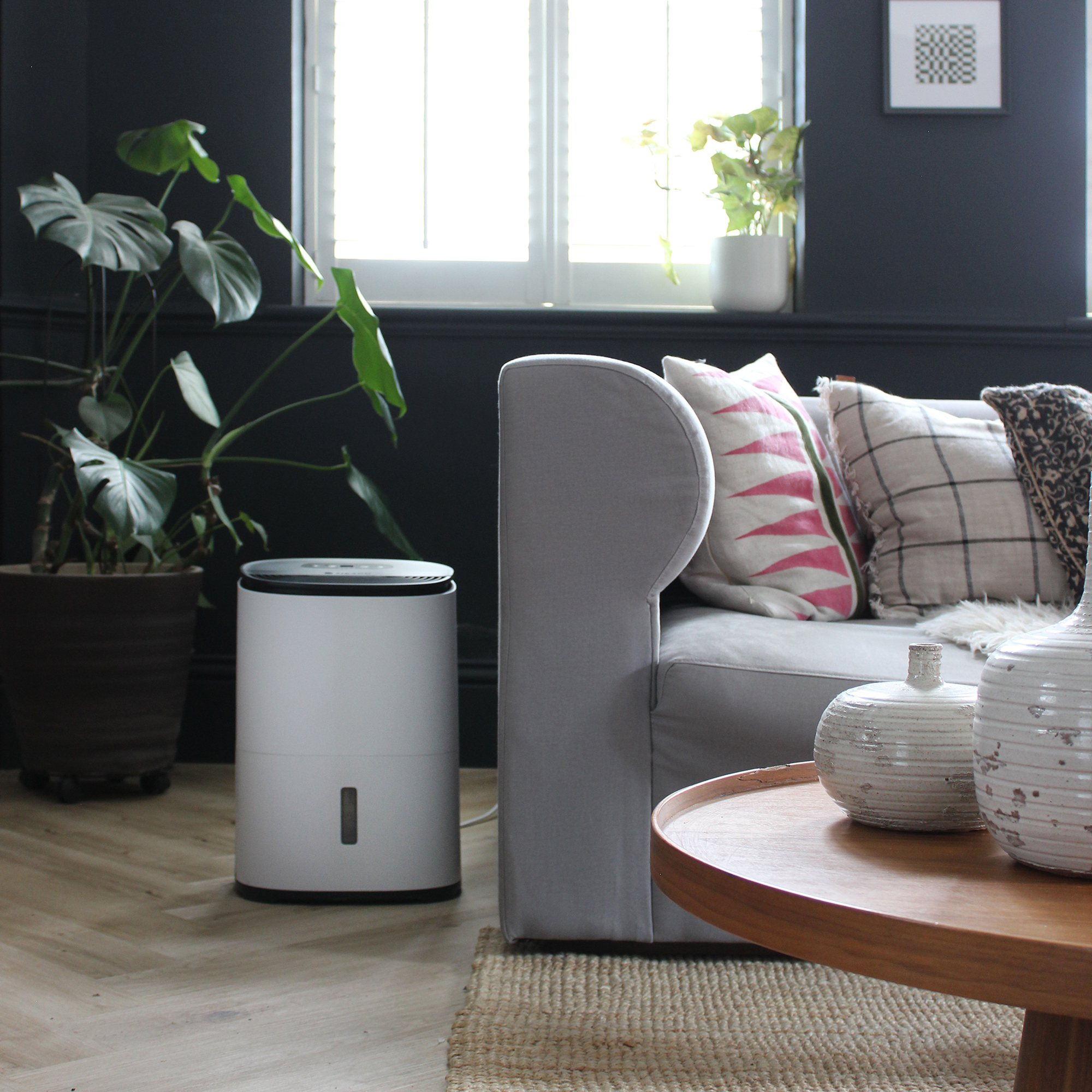
1. Putting it the wrong way round
If you're still perched on the age-old question, 'Do dehumidifiers dry clothes?', the answer is yes. You just have to position it accordingly.
If you're unsure whether you should position the dehumidifier so the air coming out of the machine gently moves the clothes, or have it the other way around with the filters facing the clothes, drawing the moisture out. Chris Michael, Managing Director at Meaco, says the first way is best for drying clothes quickly.
'Yes, position the dehumidifier next to the rack so that the dry air from the dehumidifier blows over the clothes,' he advises.
Sign up to our newsletter for style inspiration, real homes, project and garden advice and shopping know-how

Chris founded leading dehumidifier manufacturer Meaco and has been advising on humidity solutions and dehumidifiers since 1991 and is well-known within the dehumidifier industry across the world as a leader in innovation and sustainability. With a wealth of experience in the industry, Chris is committed to helping provide low-energy and low-noise solutions appliances that improve the lives of customers.
2. Neglecting to clean or change the filter
'Many users don't change the filter in their dehumidifier frequently enough,' says Utility Bidder's James. Dehumidifiers pull the air through the space through their internals over and over again to dry the air. So, they also pull through anything else that is in the air, which includes pet hair, pet dander, and dust. That’s why it’s so important to clean a dehumidifier.
'Eventually, this will build up inside the dehumidifier and will clog it up. In these cases, always buy a compressor dehumidifier with a HEPA filter, and check that filter monthly,' says Chris from Meaco. You can clean the filter with a damp microfibre cloth, like these Marigold cloths, £6.17 at Amazon, to keep it healthy.
Kate Lilywhite, dehumidifier and air treatment expert at AO.com, also recommends 'giving your filter a quick vacuum or rinse every couple of weeks to boost its efficiency.'
James also recommends you 'change the filter every few months, especially if it's in regular use' to help your dehumidifier last for years to come.

AO's latest addition is Katie, a key expert at a multitude of appliances, including dehumidifiers, portable air conditioners, fans and air purifiers.
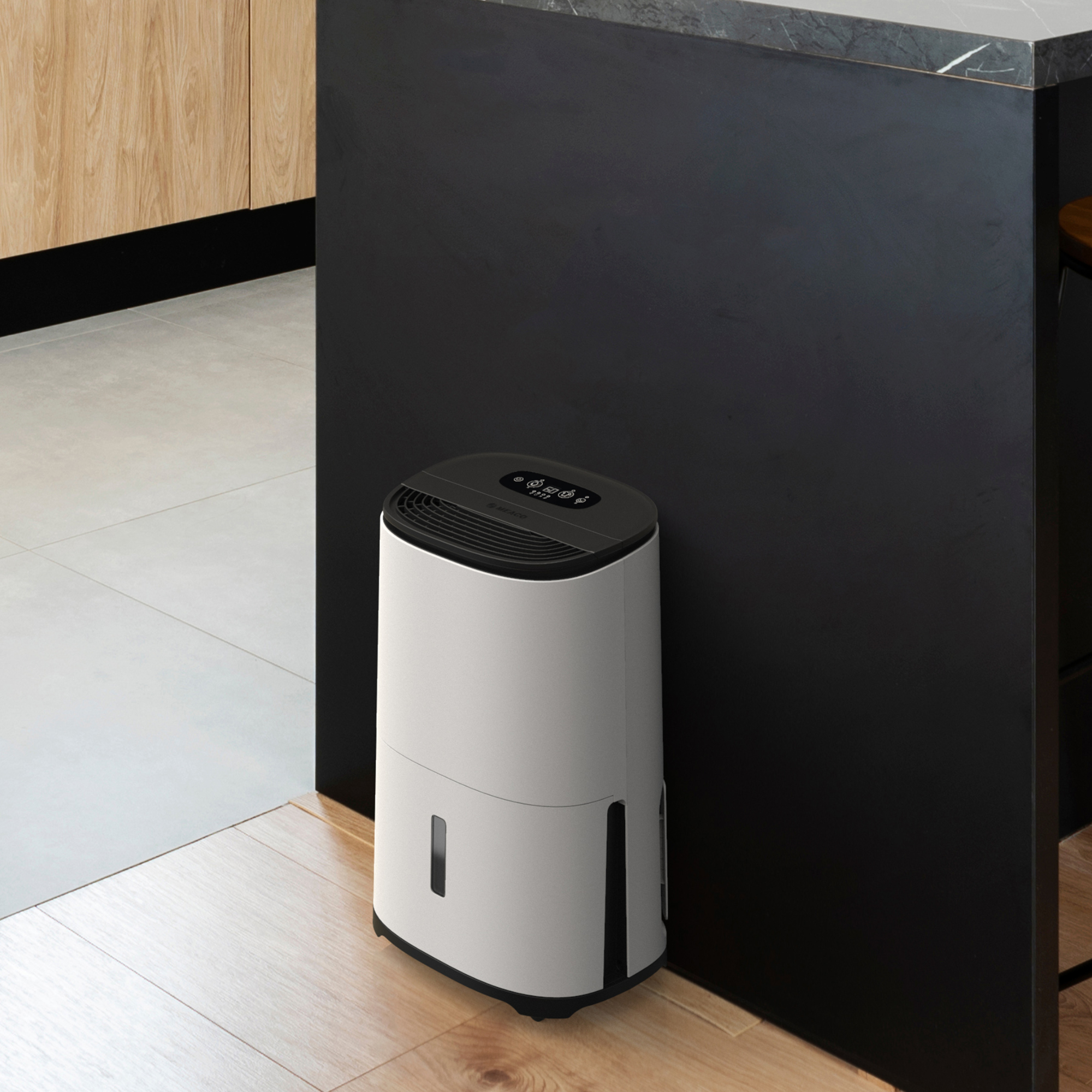
3. Putting it in the wrong place
Many people don’t know the worst places to put a dehumidifier, which is one of the biggest dehumidifier buying mistakes you can make.
'The most common mistake is probably the positioning of the dehumidifier,' says Marc Duckworth, product manager at Russell Hobbs. 'It should be placed nearest to the damp area or where there is the most moisture, while ensuring there is adequate airflow around the dehumidifier.'
You should position the dehumidifier closer to the source of the water problem to help it cure the problem faster. 'Pop it in the dampest spot, like near your window if it fogs up or in the bathroom after showers, or even by your laundry if you’re air drying your washing. Keep your dehumidifier a little bit away from walls or furniture so that air can circulate to your appliance effectively,' advises Katie.
'We don't advise using a dehumidifier in the bathroom because it isn't IP rated,' says Meaco's Chris. 'But positioning a dehumidifier as close to the bathroom as possible with the door open still can help to reduce moisture quickly.'
'Alternatively, if the dehumidifier's job is to reduce moisture generally within the home, the most suitable place for it is in the hallway in proximity to open room doors, so it can service the entire area,' advises Chris.
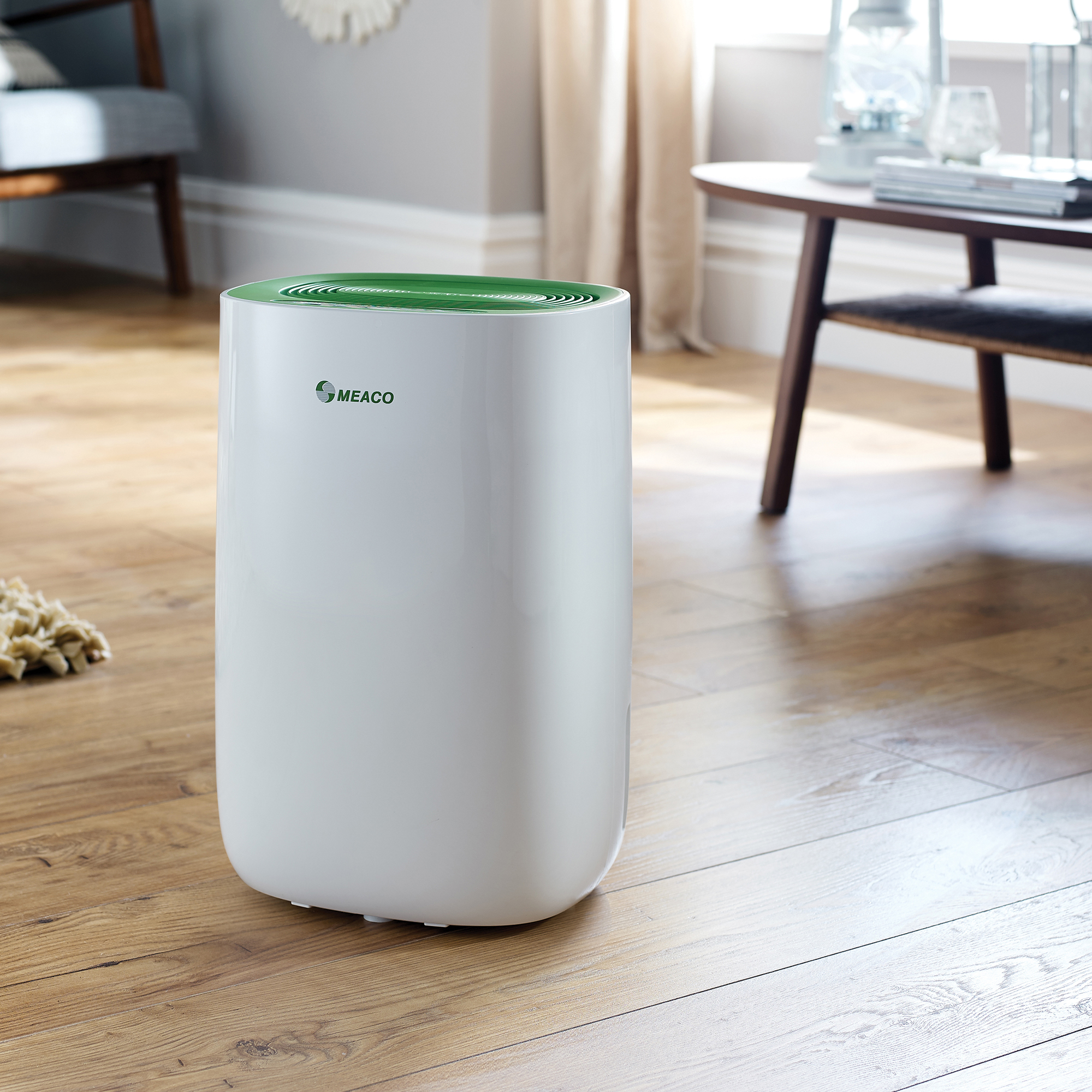
4. Assuming that drying clothes naturally is cheapest
Cost of living concerns mean we're more conscious of the high cost of running a tumble dryer, but drying clothes naturally can incur additional costs, warns Chris from Meaco. 'The moisture released by the clothes as they dry will stay in the air, meaning that wet washing will take increasingly longer to dry – especially as households may be keeping windows closed to keep precious heat in,' he says.
'Increasing moisture in the room's air can cause condensation and mould issues. This will be evidenced by water on the windows (condensation), a musty smell, and cause damage to wallpaper, carpets, furniture, and windowsills – all of which will cost to fix.'
'Eventually, the room itself will become so damp that the clothes will not dry and will have to be rewashed because they have started to smell: more money wasted,' adds Chris.
Therefore, if you're looking for the cheapest way to dry clothes naturally and stop them from smelling damp when drying indoors, a dehumidifier takes the cake in the age-old dehumidifier versus tumble dryer debate.

5. Neglecting to empty the water reservoir
Although there’s nothing quite like seeing the water collected in the reservoir of your dehumidifier, it can be easy to forget that you actually need to empty your dehumidifier, too.
Katie agrees with this. He says, ‘It’s easy to overlook emptying the water tank after long bouts. Make sure that you’re emptying the tank regularly; otherwise, you’ll waste electricity without making a noticeable difference to the humidity.’
Not only this, but neglecting to empty the water reservoir could also lead to an overflow or inefficiency of your appliance. So, just keep an eye on it to prevent any future dehumidifier mistakes.
6. Not setting the humidistat correctly
A humidistat enables you to establish a humidity level for your dehumidifier to maintain, automatically switching on when it's needed and turning off when the desired level has been reached. This is a key feature you ought to look for when buying a dehumidifier.
'Setting a dehumidifier with a humidistat too high will mean that the dehumidifier will switch off too early before it has removed the moisture from the air effectively, therefore increasing the likelihood of damp,' warns Meaco's Chris.
On the other hand, Chris notes that setting the humidistat too low will mean that the appliance has to work harder than it needs to, costing more to run without extra gain. Finding balance is key.
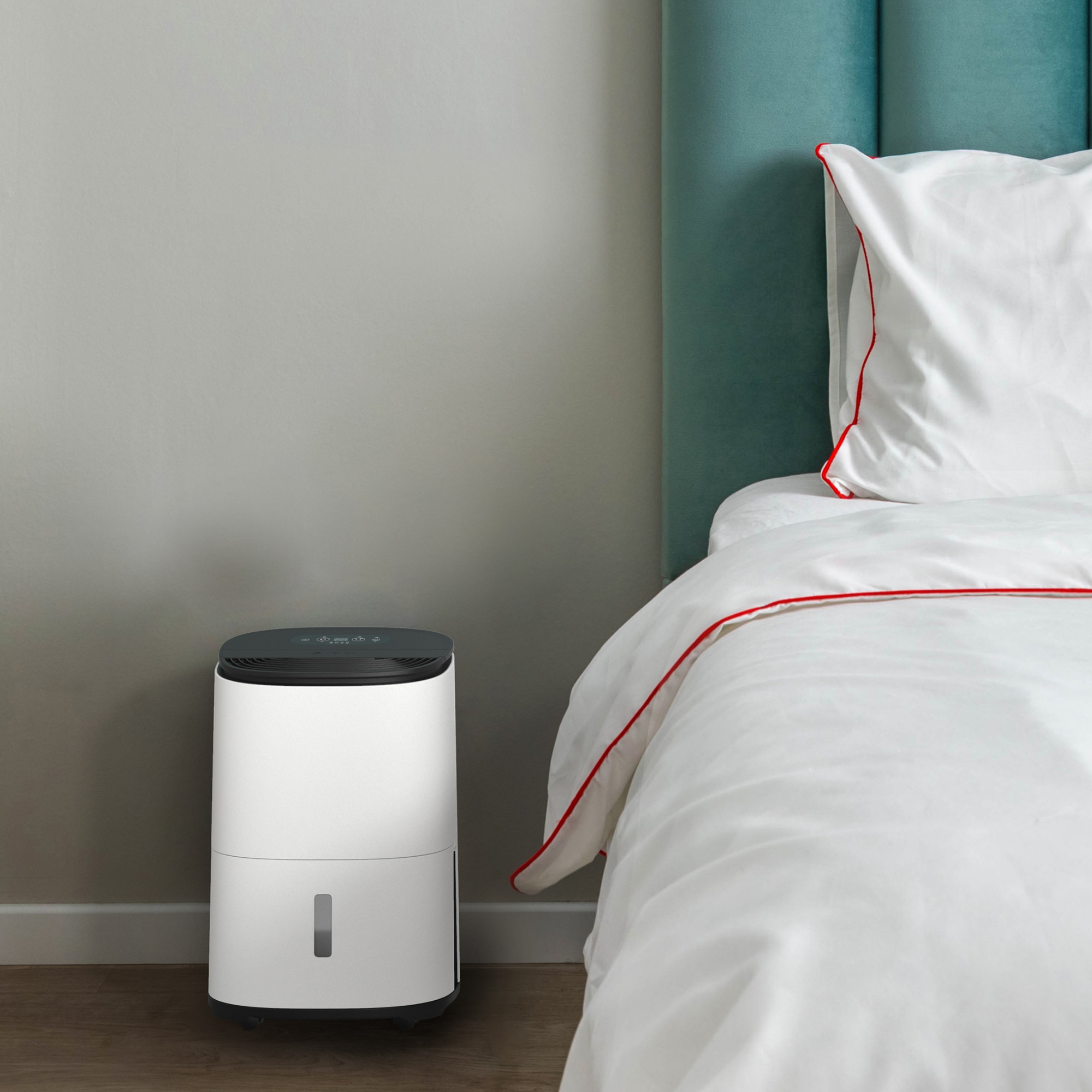
7. Assuming they're expensive
'Households need a solution to drying washing indoors without using a tumble dryer, keeping the warm air in and without creating a buildup of moisture in the air,' says Meaco's Chris. 'The solution is a dehumidifier which will dry clothes faster and prevent condensation and mould.'
He adds that some advice states purchasing a dehumidifier is a false economy. However, usage can be capped at a mere 150-200 watts (the equivalent of five or six pence to run) per hour, and there are plenty of dehumidifiers you can buy for £100 on the market.
'A dehumidifier will not only dry washing, but it will also protect the whole house from damp and condensation problems, and one with a HEPA filter will also clean the air,' he explains. 'As dry air is cheaper to heat than damp air, a dehumidifier will help households save on heating bills. The energy that it uses will also heat the space, so there are many gains all around.'
In our heated airer vs dehumidifier comparison, in fact, we found that it only worked out a little more expensive overall if you factor in upfront cost and running cost. Sometimes we have to spend a little money to save a lot. As the weather gets colder and pressure on budgets continues to rise, it is important that consumers make the right purchases for their needs.

8. Putting it too close to the wall
'Positioning a dehumidifier flush against a wall will mean the appliance has to work extra hard to pull in the air, which will cause inefficiency and ultimately cost more money,' warns Chris.
'For the best results, the dehumidifier should always be placed at least 20 centimetres away from every wall,' says Chloe King, Duux brand manager. 'In addition, we advise placing the device away from drafts from doors, windows, and air vents for optimal efficiency.'
9. Getting the wrong size for the job
Before buying a dehumidifier, you should always consider how big a dehumidifier you need for the purpose you're looking for it to serve in your home.
'Getting the wrong-sized dehumidifier for the job will mean a household is either wasting energy or cannot remove moisture effectively from the home,' says Chris from Meaco.
'A 10L or 12L compressor dehumidifier like the Meaco Arete Two 12L, from £199.99 at Amazon, is suitable for use in up to a three-bedroom house suffering with mild damp. In larger properties or for greater damp needs, larger 20L or 25L dehumidifiers should be considered.' A great 30L dehumidifier is the ProBreeze 30L Premium Dehumidifier, £224.99 at Amazon.
These are our top-rated dehumidifier models to consider:
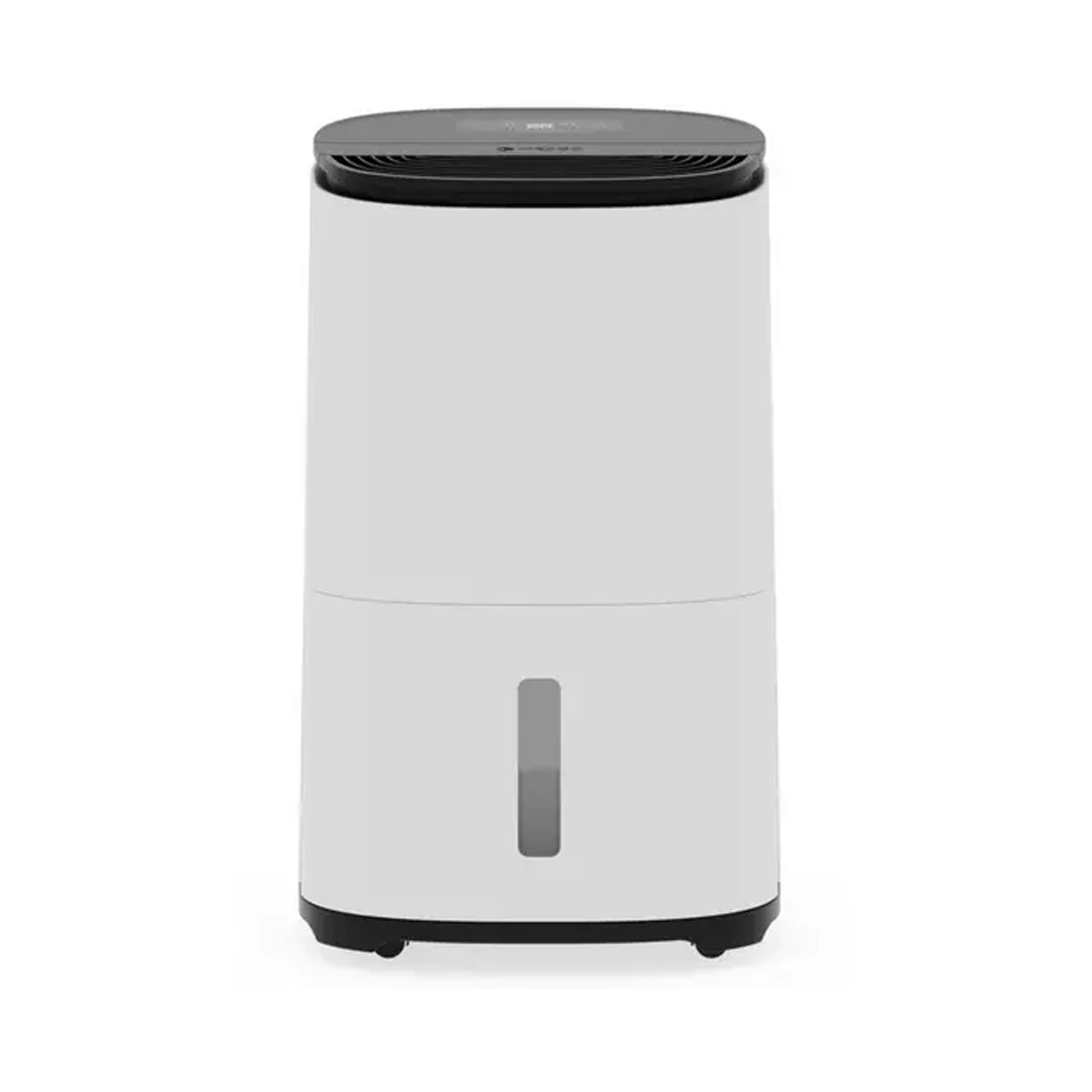
The best dehumidifier we've tested, the MeacoDry Arete Two is quiet, easy to use, works superbly and is very energy-efficient compared to other compressor dehumidifiers. Plus, its Smart Laundry Mode is brilliant at drying wet washing indoors.

Whilst we don't think it can quite beat the MeacoDry Arete Two on overall performance, Pro Breeze's 30L High Capacity Dehumidifier with Special Laundry Mode, one of the highest extraction rates on the market.

The EcoAir DD1 Simple MK3 can be operated in any space that's above 1°C, making it a great option for a garage, basement, conservatory or unheated room during the winter months – including a less than toasty utility room.

10. Not doing your research before buying
There are a few things you should look for when you buy a dehumidifier. You should consider its size, cost, and features. As we mentioned previously, we recommend choosing a dehumidifier with an electronic humidistat so that you can set the machine to only run when the humidity is too high.
If you're getting a dehumidifier to dry clothes, look for a dehumidifier that turns laundry mode off after 6 hours. 'Don't forget that energy consumption is again a vital part of your wish list as you will likely be running your dehumidifier for several hours a day, so look at the wattages of the dehumidifier carefully to make sure that you are getting a good machine and know the running costs,' advises Chris from Meaco.
It's also worth noting that what you're looking for when choosing a dehumidifier for your bedroom may very well differ from choosing a dehumidifier for the kitchen.
'Check out the warranty as well, which is often an indication of quality,' adds Chris. 'A one-year warranty probably does not say much for a machine's build quality.'
11. Not getting rid of mould in the tank
Many people buy a dehumidifier to prevent mould in their house. After all, a dehumidifier won’t necessarily get rid of mould, but it can prevent it from getting worse. But what many people fail to realise is that dehumidifiers themselves can get mouldy.
This is something Ideal Home’s Editor-in-Chief, Heather Young, experienced when she forgot to empty her dehumidifier before going on holiday. When she got back, she could see mould growing inside it.
Thankfully, she utilised the best ways to get rid of mould in a dehumidifier to salvage her appliance, but many people don’t. So, it’s best to act on this as soon as you spot any signs of mould growth.
12. Not putting the heating on while using it in winter
If you're running a dehumidifier in the colder months, it's important to make sure your heating is on at the same time. Dehumidifiers work by drawing in air, removing the excess moisture and then releasing it back into the room. But if the space is too cold, the air can hold less moisture, meaning your unit won't be able to extract water as effectively.
'It might sound counterintuitive, but yes. In cooler weather, having your heating on will help your dehumidifier to work,' explains Katie. 'Warm air holds more moisture, which makes it easier for your dehumidifier to extract any water. If your room’s too chilly, then your dehumidifier may struggle – instead, try to put your appliance in the best conditions to pull out any excess damp.'
It also means your dehumidifier doesn't need to run as hard or as long, helping you save on energy costs in the long run.
13. Keeping windows open when using it
If you leave a window open while using a dehumidifier, damp outdoor air will keep flowing back inside, and your unit will be stuck in a constant cycle of drying to dry an endless supply of moisture. That not only slows the process right down but will increase your energy use.
Katie explains that leaving your windows open just allows more humid air to enter your home, meaning your dehumidifier ends up working hard for nothing. 'Shut doors and windows in the room you’re treating – Ultimately, you’re trying to create a controlled environment so your dehumidifier can excel,' adds Katie.
FAQs
What happens if you dehumidify too much?
If your dehumidifier stays on too long and takes all of the moisture out of your home, you may find that it feels incredibly dry. This can affect your breathing and make people in your home extremely ill.
As if that wasn’t enough, dehumidifying too much can also cause dry skin and affect your sleep. In a worst-case scenario, it can also cause damage to your home as certain materials - like wooden flooring - rely on a small amount of moisture to maintain their shape and structure.
Should a dehumidifier be left on all the time?
Knowing how long you should let a dehumidifier run is key if you want to make the most of this appliance. After all, you want a dehumidifier to maintain a healthy humidity in your home - no more and no less.
However, it’s not advised to leave a dehumidifier on all the time. You should instead invest in a dehumidifier that automatically detects the humidity level and turns off when it has reached the desired level. This will ensure that your home doesn’t become too dry.
If your dehumidifier doesn’t have this function, you should use a humidity meter (hygrometer) to test the humidity level in your home. You should aim for anything between 40 and 60%rh (relative humidity).
Keeping all of these expert-led tips in mind the next time you use your dehumidifier will ensure you can avoid falling victim to these common dehumidifier mistakes.

Jenny is Senior Digital Editor and joined the team in 2021, working across Ideal Home, Real Homes, Homes & Gardens, Livingetc and Gardeningetc. Since getting on the property ladder, her passion for interior design and gardening has taken on a new lease of life. She loves collecting and salvaging unique items (much to her other half's despair) but sniffing out stylish home bargains is her one true love.
- Lauren BradburyContent Editor (House Manual)
- Jullia JosonJunior Writer
